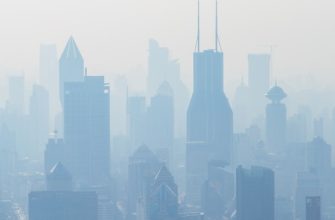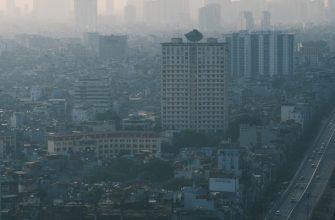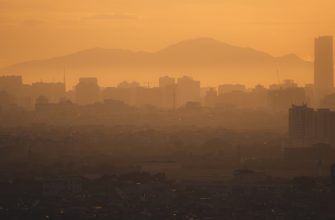Understanding Urban Air Pollution: Causes and Effects
Urban air pollution is a significant environmental challenge that affects the quality of life in cities. Understanding the factors that contribute to this issue is crucial for implementing effective solutions. Major causes of urban air pollution include vehicle emissions, industrial activities, construction work, and the burning of fossil fuels. These sources release harmful pollutants into the atmosphere, leading to a decline in air quality.
The effects of air pollution are far-reaching and can have serious implications for public health and the environment. Exposure to polluted air can cause respiratory diseases, cardiovascular problems, and even premature death. Furthermore, air pollution can lead to environmental degradation, affecting ecosystems and biodiversity. Urban areas are particularly vulnerable due to high population density and concentrated sources of pollution.
- Vehicle Emissions: A leading contributor to urban air pollution, primarily from cars and trucks.
- Industrial Activities: Factories and manufacturing plants release various pollutants into the air.
- Construction Work: Dust and other particulates from construction sites degrade air quality.
- Burning Fossil Fuels: Power plants and heating systems that burn coal, oil, or gas emit harmful substances.
To combat urban air pollution, it is essential to promote sustainable practices. Encouraging the use of public transportation, implementing strict emissions standards, and increasing green spaces can significantly improve air quality. Awareness campaigns aimed at educating the public about the sources and effects of air pollution can also foster community involvement in pollution reduction efforts.
In summary, understanding urban air pollution, its causes, and its effects is vital for creating cleaner, healthier cities. By addressing the primary sources of pollutants, cities can enhance air quality and protect the health of their inhabitants.
Simple Lifestyle Changes for Cleaner Air
Maintaining clean air in urban environments is a vital concern for health and well-being. Implementing simple lifestyle changes can significantly enhance air quality. These adjustments can be easily integrated into daily routines, making a substantial difference in the overall air quality.
- Opt for Public Transportation: Utilizing buses, trams, or subways reduces the number of vehicles on the road, thereby lowering emissions and improving urban air quality.
- Embrace Biking or Walking: Choosing to bike or walk short distances not only promotes a healthier lifestyle but also minimizes air pollution from motorized transport.
- Reduce Energy Consumption: Simple actions such as turning off lights and unplugging devices can decrease the amount of energy needed from power plants, which can help in reducing air pollutants.
- Choose Eco-Friendly Products: Selecting non-toxic cleaning supplies and personal care items can reduce the release of harmful chemicals into the air, contributing to a cleaner atmosphere.
- Plant Indoor and Outdoor Greenery: Incorporating plants in living spaces and urban areas can naturally filter air pollutants and enhance air quality.
- Limit Use of Aerosols: Reducing the use of aerosol sprays can prevent harmful chemicals from being released into the air, helping to keep the atmosphere cleaner.
- Advocate for Local Policies: Supporting initiatives aimed at reducing emissions from industrial sources can lead to significant improvements in urban air quality.
These straightforward lifestyle changes can collectively contribute to a healthier and cleaner air environment in urban areas. By making conscious choices and encouraging community involvement, individuals can play a crucial role in preserving air quality for current and future generations.
The Role of Green Spaces in Urban Air Quality
Green spaces play a crucial role in enhancing urban air quality. They serve as natural filters, absorbing harmful pollutants and releasing oxygen, thus contributing to a healthier environment. Urban areas often suffer from poor air quality due to high levels of emissions from vehicles and industrial activities. By incorporating parks, gardens, and green rooftops, cities can significantly mitigate these effects.
Vegetation in green spaces helps to reduce particulate matter and other airborne toxins, effectively lowering the concentration of harmful substances in the air. Trees and plants capture dust, smoke, and other pollutants, making the atmosphere cleaner and more breathable for urban residents. Furthermore, these areas provide shade and cooling effects, which are essential for combating heat islands prevalent in densely populated regions.
- Improved Air Quality: Green areas absorb carbon dioxide and release oxygen, leading to a more balanced atmosphere.
- Pollutant Reduction: Trees and plants filter out harmful particles and gases, contributing to lower pollution levels.
- Temperature Regulation: Urban greening helps maintain cooler temperatures, reducing the demand for energy used in cooling systems.
- Enhanced Biodiversity: Green spaces promote a variety of plant and animal life, which supports ecological balance.
- Community Well-being: Access to nature has been linked to improved mental health and overall quality of life for city dwellers.
Incorporating green spaces into urban planning is an effective strategy for improving air quality. These areas not only enhance the aesthetic appeal of cities but also provide essential environmental benefits. As urban populations continue to grow, the importance of maintaining and expanding green spaces becomes increasingly vital for ensuring cleaner air and a healthier urban landscape.
Innovative Technologies to Combat Air Pollution
Innovative technologies are essential for combating air pollution in urban environments. As cities grow and industrial activities increase, the need for effective solutions to maintain air quality becomes more pressing. Various advancements are being implemented to tackle air pollution and promote cleaner urban atmospheres.
- Air Purification Systems: Advanced air filtration technologies are being deployed in buildings and public spaces to remove harmful particulates and pollutants. These systems use HEPA filters and activated carbon to significantly improve indoor air quality.
- Smart Sensors: Utilizing IoT (Internet of Things) devices, smart sensors can monitor air quality in real-time. These sensors provide valuable data on pollution levels, helping city planners and residents take proactive measures to reduce exposure to harmful air.
- Green Infrastructure: The incorporation of green roofs, vertical gardens, and urban forests can effectively mitigate air pollution. Plants naturally filter air by absorbing carbon dioxide and releasing oxygen, contributing to a healthier urban ecosystem.
- Electric Vehicles: Promoting the use of electric vehicles (EVs) reduces the reliance on fossil fuels. Transitioning to EVs can significantly decrease emissions from transportation, a major source of urban air pollution.
- Renewable Energy Sources: Implementing solar, wind, and hydropower can reduce the carbon footprint of cities. Transitioning to renewable energy decreases reliance on fossil fuels, thereby improving air quality.
By adopting these innovative technologies, cities can combat air pollution more effectively. Collaboration between government bodies, businesses, and residents is crucial in implementing these strategies. As urban areas continue to expand, prioritizing clean air through technological advancements is vital for public health and environmental sustainability.
Community Initiatives for Cleaner Urban Environments
Community initiatives play a vital role in promoting cleaner urban environments and enhancing the quality of air in cities. By fostering collaboration among residents, local organizations, and government bodies, communities can implement effective strategies to combat air pollution. These collective efforts not only improve air quality but also raise awareness about environmental issues.
- Awareness Campaigns: Organizing educational programs and workshops can help residents understand the importance of clean air and the impact of pollution on health and the environment.
- Tree Planting Drives: Initiatives that encourage tree planting in urban areas can significantly enhance air quality. Trees absorb carbon dioxide and release oxygen, contributing to a healthier atmosphere.
- Car-Free Days: Hosting car-free days or promoting the use of public transport can reduce vehicular emissions, leading to cleaner air in cities. Such events also encourage walking and cycling, promoting a more sustainable lifestyle.
- Recycling Programs: Implementing community-wide recycling initiatives can minimize waste and decrease pollution from landfills. Proper waste management is crucial for maintaining air quality.
- Air Quality Monitoring: Establishing local air quality monitoring systems allows communities to track pollution levels, enabling them to take timely action to address air quality issues.
By actively engaging in these community initiatives, residents can contribute to the broader goal of achieving cleaner urban environments. Collaboration among individuals and organizations is essential to implement these strategies effectively, ensuring a healthier and more sustainable future for urban areas.
Advocating for Policy Changes to Protect Air Quality
Advocating for policy changes is crucial to protect air quality in urban environments. Effective legislation can lead to significant improvements in air cleanliness, which in turn enhances public health and the overall quality of life for city residents. To achieve these goals, community engagement and awareness are essential. Citizens must be informed about the impact of pollution and the importance of clean air initiatives.
- Promote public awareness campaigns to educate residents about air quality issues.
- Encourage participation in local government meetings to discuss air pollution concerns.
- Support initiatives aimed at reducing emissions from vehicles and industrial sources.
- Advocate for the development of green spaces, which can naturally filter pollutants.
- Push for stricter regulations on construction activities that contribute to dust and other airborne particles.
Collaboration between citizens, government, and organizations is vital. By uniting efforts, communities can lobby for policies that prioritize air quality standards and enforcement. Advocacy groups can also play a significant role in shaping air quality regulations by providing research and data that highlight the need for change.
Monitoring air quality is another critical aspect of maintaining a clean atmosphere. Implementing technologies that track pollution levels can help in making informed decisions about necessary policy changes. Publicly accessible air quality data can empower communities to take action and hold authorities accountable.
In summary, advocating for policy changes to safeguard air quality is an essential strategy in maintaining clean air in urban settings. By raising awareness, participating in local governance, and leveraging technology for monitoring, communities can effectively contribute to the development of healthier environments.








